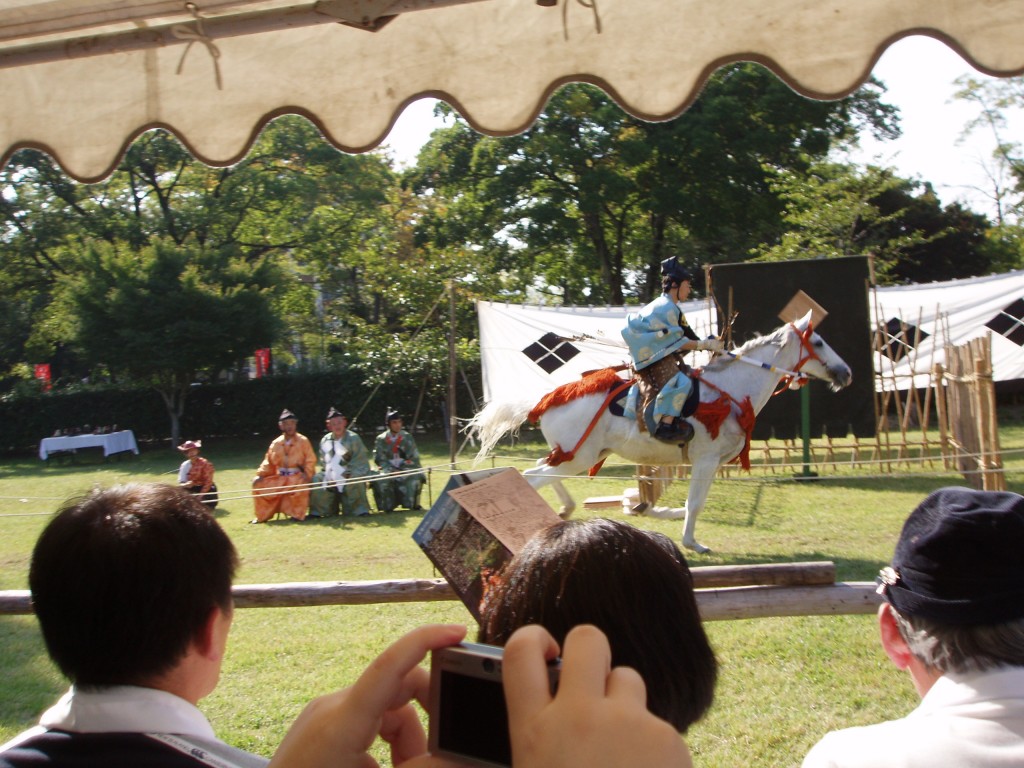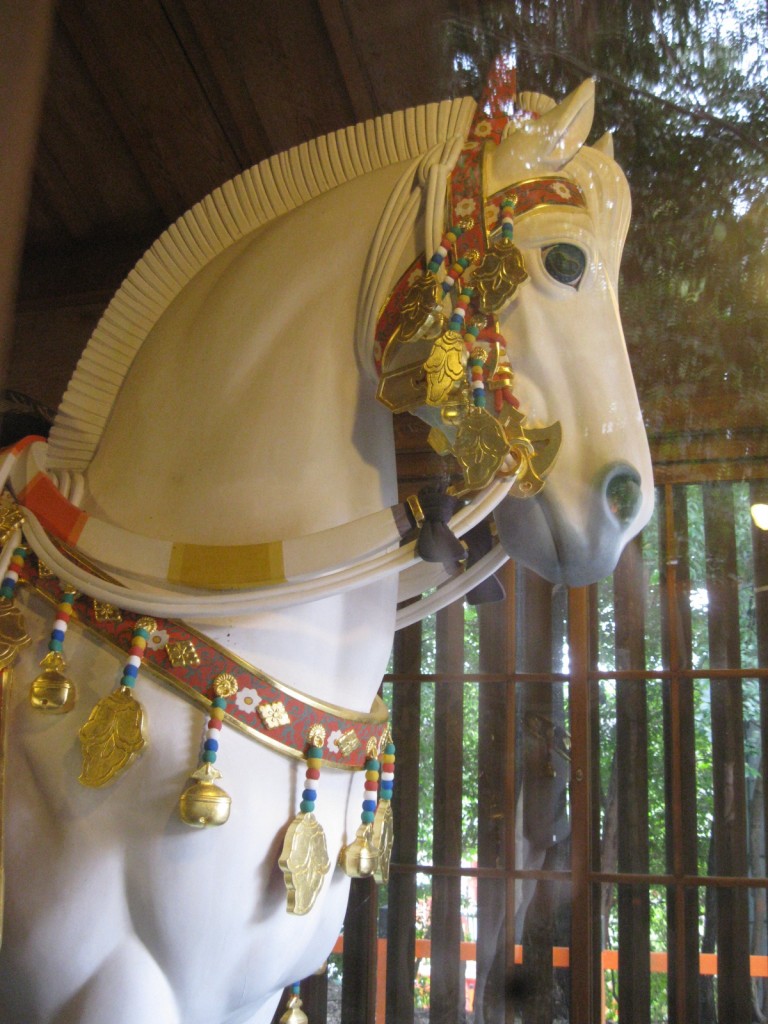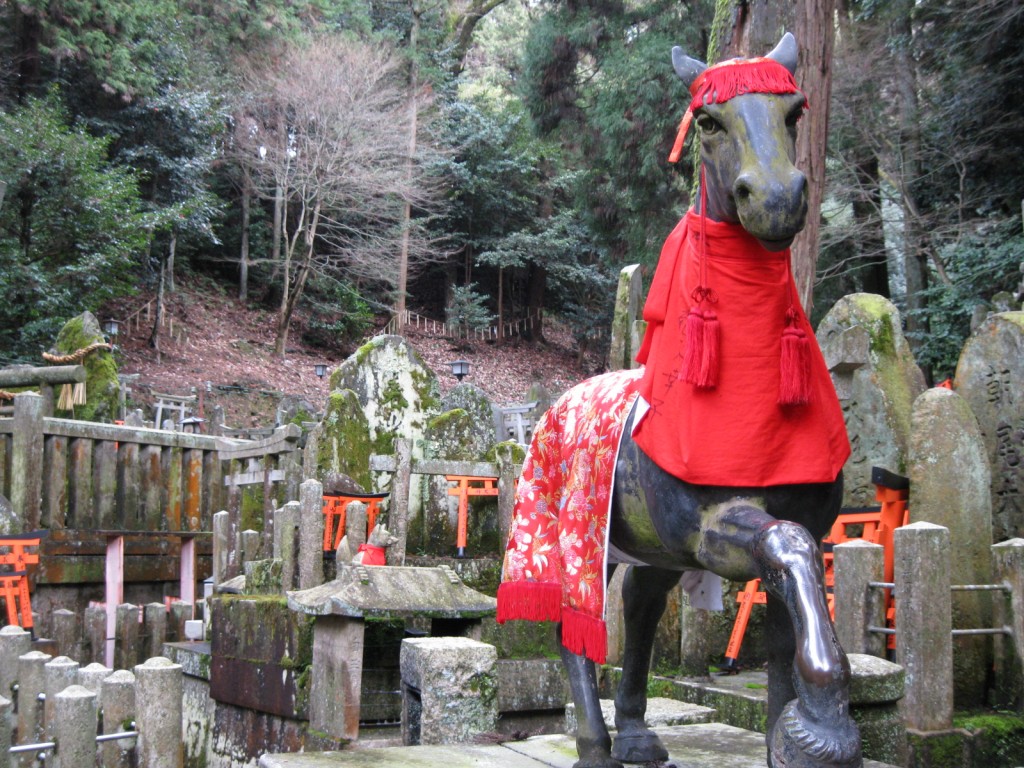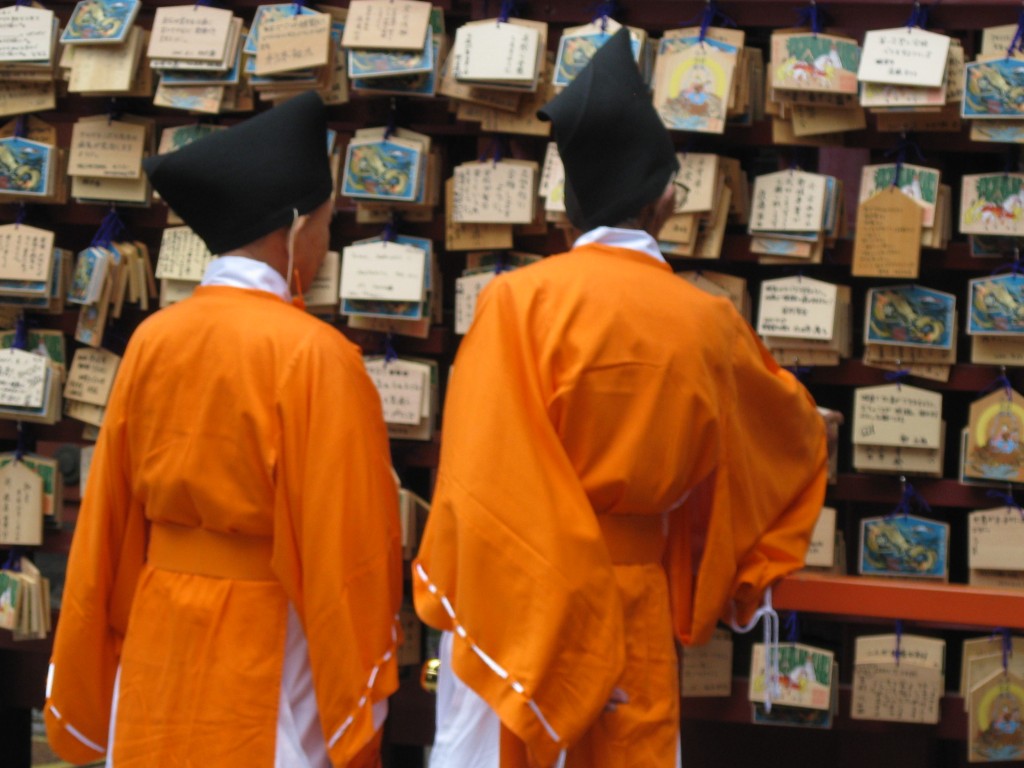
2013 seemed to just shoot by!
New Year is an important and symbolic time of revitalisation. Renewal is of the essence to Shinto, and here is a prime example. The last few days of the old year offer an opportunity to clean up and clear up. Settle debts, do the osoji (big cleaning), and make sure the emotional clutter of the past is dealt with. Then at New Year, purified and pristine, one can start out with fresh resolve…

White horse statue at Fushimi Inari is a symbolic mount for a symbolic kami
And this year could be a wild ride, for it’s the year of the horse. For Shinto, horses play a vital part as the mount of the kami that mediates between this world and the other. That’s why you find horse archery put on at shrines, horse picture plaques hung for prayers (ema), even real horses at some shrines.
(Twelve shrines still keep the old tradition of maintaining a real horse, including Ise Jingu and Kamigamo Shrine here in Kyoto. Because of the expense other shrines have dispensed with them, or have statues instead.)
To the people of ancient times, horses were symbols of power, ridden by the ruling classes, to which mysterious qualities were ascribed. Think of winged Pegasus, able not just to gallop at speeds beyond human understanding but to fly to unseen worlds. Horses can make dreams come true.
May all the readers of Green Shinto have happy rides throughout 2014!
***********************************************************************************
From Mark Schuhmacher’s onmark Encyclopedia of Japanese Religions

All dressed up and ready for spirits to ride
THE HORSE, PARTICULARLY THE WHITE HORSE, is a sacred animal in Japanese Shintō traditions. Local deities (kami) are believed to ride horses between this world and the sacred realm, and hence the horse represents the connection between earth and heaven. In olden times, the ruling elite would present real horses to Shintō shrines when making a vow or entreaty, for the animal was considered an auspicious messenger of the gods. The text Shoku Nihongi (compiled in 797 AD) mentions that white horses were dedicated to shrines when praying for rain to end, while black horses were presented when praying for rain to fall. The white horse is considered the sacred mount of Amaterasu (Japan’s supreme sun goddess) and even today various shrines dedicated to Amaterasu keep a white horse in their stables. White is the color of purity and as such is treasured by Shintō. There is also the belief that fine horses are the offspring of dragons and other water gods. The tradition of offering real horses to Shintō shrines was beyond the means of most people, but over the centuries, small wooden horse statues and pictorial votive tablets known as EMA 絵馬 (lit. “horse pictures”) were presented as substitutes for the real animal. Today, during the annual Tanabata festival on July 7, a small welcoming horse (mukae-uma 迎 馬) is hung from gates and trees to be offered as a mount for the visiting deity. Horse effigies are also offered to ancestral spirits during the Obon festival.

Ema started out as large horse-pictures donated to shrines in place of actual horses, which were too expensive to maintain. In time the large pictures, only affordable by the rich, became smaller and accessible to everyone. The pictures changed from horses to images relevant to the local traditions of the shrine. Thus e-ma (picture horse) became an open prayer to the kami, expressing people's private hopes. Sometimes they make interesting reading!

Leave a Reply